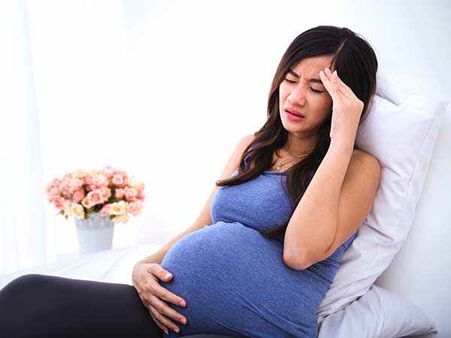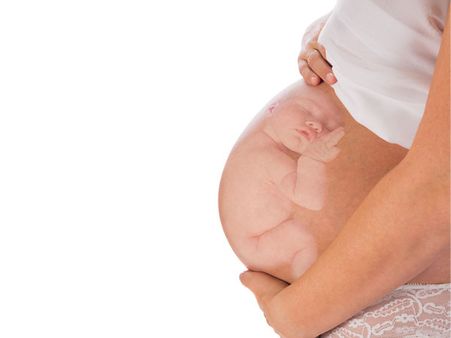Just In
- 1 hr ago

- 2 hrs ago

- 3 hrs ago

- 11 hrs ago

Don't Miss
- News
 US Impose Sanctions On 3 Chinese Firms For Supplying Components To Pakistan's Ballistic Missile Project
US Impose Sanctions On 3 Chinese Firms For Supplying Components To Pakistan's Ballistic Missile Project - Technology
 Garena Free Fire Max Redeem Codes for April 20, 2024: Get Access to the Latest In-game Loot
Garena Free Fire Max Redeem Codes for April 20, 2024: Get Access to the Latest In-game Loot - Movies
 Shamita Shetty Embarks on a Creative Journey, Shares Her Passion for Art on Instagram
Shamita Shetty Embarks on a Creative Journey, Shares Her Passion for Art on Instagram - Sports
 KKR vs RCB Head To Head Record, Stats & Results in Eden Gardens, Kolkata Ahead of IPL 2024 Match 36
KKR vs RCB Head To Head Record, Stats & Results in Eden Gardens, Kolkata Ahead of IPL 2024 Match 36 - Automobiles
 Ford Mustang 60th Anniversary Package – Limited To Just 1,965 Units
Ford Mustang 60th Anniversary Package – Limited To Just 1,965 Units - Finance
 Daily Relative Strength Index RSI In A Bullish Mode of This Pharma Stock; Buy For TP Rs 635-685
Daily Relative Strength Index RSI In A Bullish Mode of This Pharma Stock; Buy For TP Rs 635-685 - Education
 Exam Pressure Does Not Exist; Studying Punctually is Crucial; Says Aditi, the PSEB 2024 Topper
Exam Pressure Does Not Exist; Studying Punctually is Crucial; Says Aditi, the PSEB 2024 Topper - Travel
 Journey From Delhi To Ooty: Top Transport Options And Attractions
Journey From Delhi To Ooty: Top Transport Options And Attractions
World Preeclampsia Day: Causes, Symptoms, Risk Factors, Complications, Diagnosis & Treatment
World Preeclampsia Day (WPD) is observed on 22 May, every year. WPD is a day when organizations from around the world gather to educate others about preeclampsia, HELLP Syndrome, and other hypertensive disorders of pregnancy.
Preeclampsia is a disorder characterised by high blood pressure and excess protein excretion in the urine. It is a common medical complication during pregnancy associated with high maternal morbidity and mortality and intrauterine foetal growth restriction [1].
Preeclampsia occurs in about two to eight per cent of all pregnancies globally [2]. According to the National Health Portal of India, preeclampsia affects 8 to 10 per cent of pregnant women. This disorder can pose a risk to the mother and baby's health.

Causes Of Preeclampsia
The
exact
cause
of
preeclampsia
is
not
fully
understood.
Preeclampsia
may
occur
due
to
abnormal
changes
in
the
placenta,
an
organ
that
nourishes
the
foetus
during
pregnancy.
Blood
vessels
that
send
blood
to
the
placenta
become
narrow
or
don't
function
properly
and
react
differently
to
hormonal
signals,
thereby
limiting
the
blood
flow
to
the
placenta.
The
abnormality
of
the
placenta
has
been
linked
to
certain
genes
and
impairment
of
the
immune
system
[3].
Preeclampsia occurs after 20 weeks of pregnancy. However, in some cases, it may occur earlier [4].

Symptoms Of Preeclampsia
According to the American Pregnancy Association, the symptoms of preeclampsia include the following:[5]
•
High
blood
pressure
•
Water
retention
•
Excess
protein
in
the
urine
•
Headache
•
Blurred
vision
•
Unable
to
tolerate
bright
light
•
Shortness
of
breath
•
Fatigue
•
Nausea
and
vomiting
•
Pain
in
the
upper
right
abdomen
•
Urinating
infrequently


Risk Factors Of Preeclampsia
•
Kidney
disease
•
Chronic
hypertension
•
Diabetes
mellitus
•
Multiple
pregnancies
•
Had
preeclampsia
previously
•
Antiphospholipid
antibody
syndrome
•
Nulliparity
•
Systemic
lupus
erythematosus
•
High
altitude
•
Family
history
of
heart
disease
•
Obesity
[6]
•
Family
history
of
preeclampsia
in
first-degree
relative
•
Pregnancy
after
the
age
of
40
[7]

Complications Of Preeclampsia
The
complications
of
preeclampsia
occur
in
three
per
cent
of
pregnancies
[8].
These
include:
•
Foetal
growth
restriction
•
Preterm
birth
•
Placental
abruption
•
HELLP
syndrome
•
Eclampsia
•
Heart
disease
•
Organ
problems
[9]


When To See A Doctor
Ensure that you visit your gynaecologist frequently so that your blood pressure can be monitored. If you experience any of the above-mentioned symptoms consult your doctor immediately.

Diagnosis Of Preeclampsia
The doctor will conduct a physical examination and ask the occurrence of high blood pressure during previous pregnancies if had any. Then a thorough medical history will be obtained by the doctor to identify medical conditions that can increase the risk of preeclampsia.
If the doctor suspects preeclampsia, further tests such as blood tests, urine analysis and foetal ultrasound tests will be done.
The diagnostic criteria for preeclampsia are:
•
Persistent
systolic
blood
pressure
of
140
mm
Hg
or
higher,
or
diastolic
blood
pressure
of
90
mm
Hg
or
higher
after
20
weeks
of
pregnancy
is
considered
abnormal
[10].
•
Protein
in
your
urine
(proteinuria).
•
Having
severe
headaches.
•
Visual
disturbances.

Treatment Of Preeclampsia
Delivery remains the only treatment for preeclampsia depending on the timing of delivery and the seriousness of the maternal and foetal condition. Labour induction can lower the risk of higher mortality and morbidity.
Hemodynamic, neurological, and laboratory monitoring is necessary after delivery for patients with severe preeclampsia. Laboratory monitoring should be done daily throughout the day in the first 72 hours after delivery.
Antihypertensive drugs are used to lower high blood pressure in severe preeclampsia pregnancies.
Corticosteroid medications can also help treat preeclampsia, depending on the gestational age [11].

Prevention Of Preeclampsia
According to the American Pregnancy Association, there are some ways that may help prevent preeclampsia [12].
•
Use
less
salt
in
your
meals.
•
Get
enough
rest.
•
Drink
six
to
eight
glasses
of
water
a
day.
•
Exercise
daily
•
Don't
eat
fried
or
junk
foods
•
Don't
drink
alcohol
•
Avoid
drinking
caffeinated
beverages.
•
Keep
your
leg
elevated
several
times
throughout
the
day.
Common FAQs
Q. How does preeclampsia affect the unborn baby?
A. Preeclampsia can prevent the placenta from getting enough blood and if it doesn't get enough blood, the baby will get less amounts of oxygen and food, resulting in low birth weight.
Q. Can preeclampsia come on suddenly?
A. Preeclampsia can develop gradually and may sometimes develop without any symptoms.
Q. Does stress cause preeclampsia?
A. Psychological stress may directly or indirectly affect pregnancy and can lead to preeclampsia.
Q. Can a baby die from preeclampsia?
A. Preeclampsia if not diagnosed on time can cause maternal and infant death.
-
 pregnancy parentingWorld Preeclampsia Day: Early Warning Signs Pregnant Women Should Know
pregnancy parentingWorld Preeclampsia Day: Early Warning Signs Pregnant Women Should Know -
 pregnancy parentingWhite Lung Syndrome: What Are The Symptoms Of The Disease Rampant In China? How Does It Spread?
pregnancy parentingWhite Lung Syndrome: What Are The Symptoms Of The Disease Rampant In China? How Does It Spread? -
 healthWorld HIV/AIDS Day: What Is The Difference Between HIV and AIDS?
healthWorld HIV/AIDS Day: What Is The Difference Between HIV and AIDS? -
 healthDengue 101: Causes, Symptoms, Risks, Complications, Treatment, Prevention, Diet And More
healthDengue 101: Causes, Symptoms, Risks, Complications, Treatment, Prevention, Diet And More -
 healthDiarrhoea 101: Causes, Symptoms, Risks, Complications, Treatment, Prevention, Diet And More
healthDiarrhoea 101: Causes, Symptoms, Risks, Complications, Treatment, Prevention, Diet And More -
 health'Epileptic Nightmare' of Neurocysticercosis: The Hidden Epidemic of Parasites Causing Epilepsy
health'Epileptic Nightmare' of Neurocysticercosis: The Hidden Epidemic of Parasites Causing Epilepsy -
 pregnancy parentingLife-Threatening Risk During Pregnancy: Sepsis Can Harm Both Mother and Baby
pregnancy parentingLife-Threatening Risk During Pregnancy: Sepsis Can Harm Both Mother and Baby -
 healthStay Informed: The Hidden Dangers of Legionnaires' Disease and How to Prevent It
healthStay Informed: The Hidden Dangers of Legionnaires' Disease and How to Prevent It -
 healthMyths vs Facts: Can A Single Mosquito Bite Really Give You Dengue?
healthMyths vs Facts: Can A Single Mosquito Bite Really Give You Dengue? -
 healthTop 5 Reasons For Vaginal Rash: When You Should See A Doctor
healthTop 5 Reasons For Vaginal Rash: When You Should See A Doctor -
 healthCan Inhaling Menthol Help Improve Memory For Alzheimer's Disease?
healthCan Inhaling Menthol Help Improve Memory For Alzheimer's Disease? -
 healthWorld Vitiligo Day 2023: Are You At Risk Of Developing Vitiligo?
healthWorld Vitiligo Day 2023: Are You At Risk Of Developing Vitiligo?


 Click it and Unblock the Notifications
Click it and Unblock the Notifications




